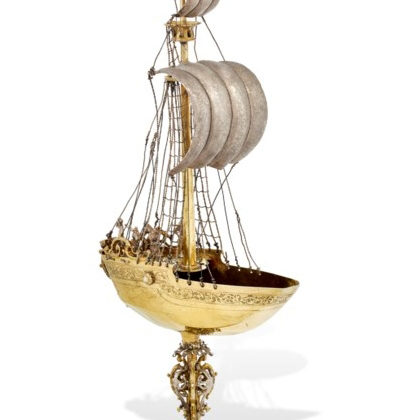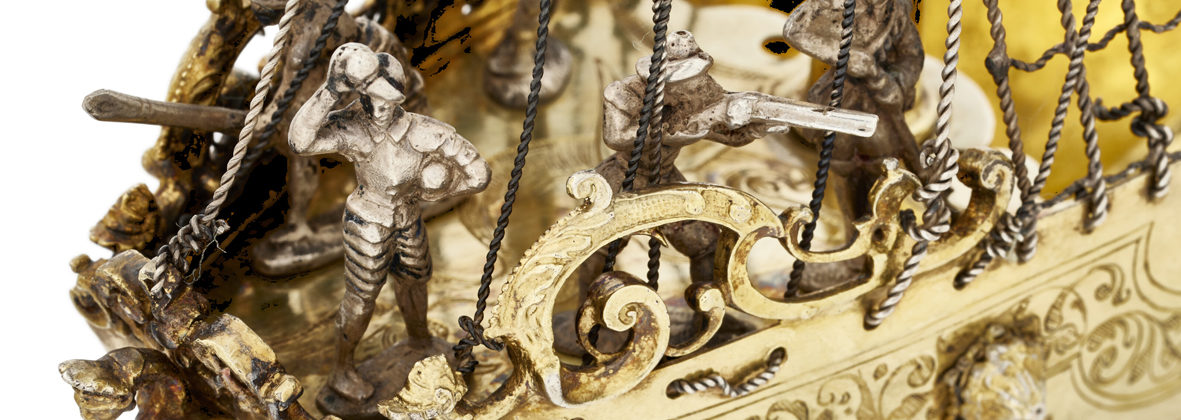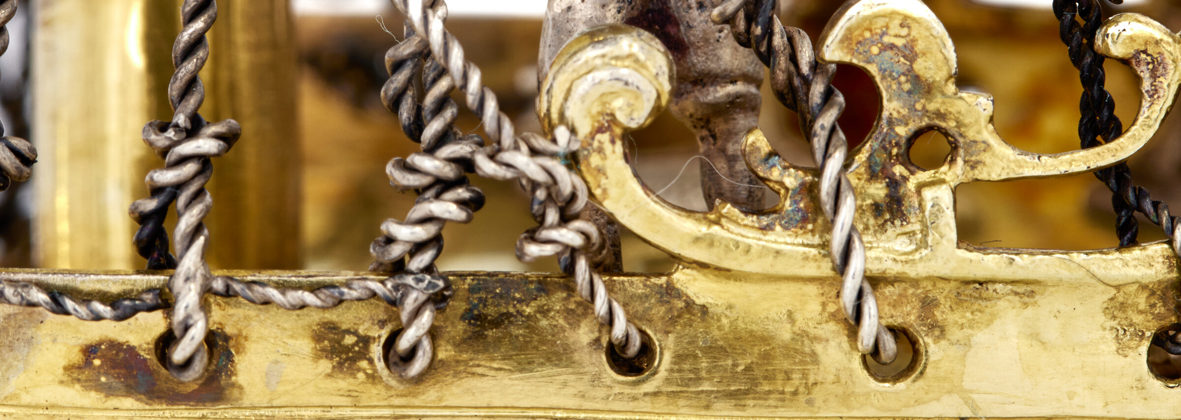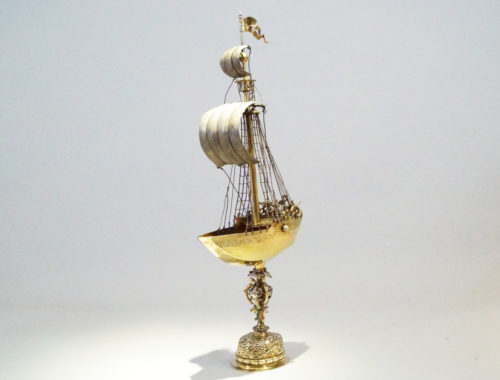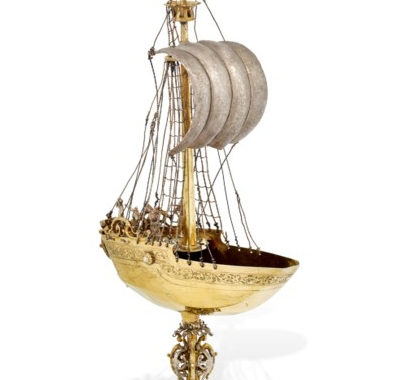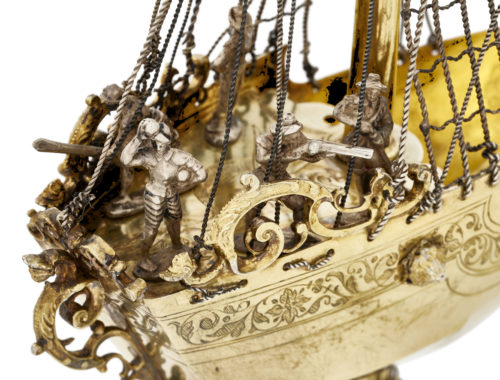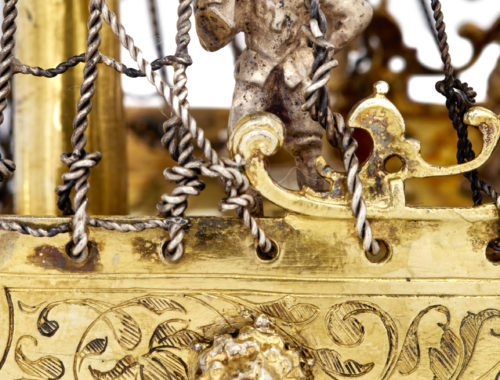NUREMBERG, 1609-1629
Master ESAIS ZUR LINDEN,
On domed base chased with dolphins and waves, with elaborate openwork scroll baluster stem, the plain hull engraved with a band of foliage and the deck with a sea monster, with a single mast and two sails, with crows nest and pennant, the upper sail engraved with the initials GB over GS, the deck applied with five soldiers, marked on hull
The nef is a celebratory cup within the tradition of drinking games. The majority seem to have been produced in Augsburg and Nuremberg, the two most important Renaissance goldsmithing centers. Geographically located at the heart of Europe, Augsburg and Nuremberg were major hubs of commercial exchange. This economic dynamism enabled the establishment of a community of merchants whose wealth attracted craftsmen and artists from all over Europe. This new clientele, both wealthy and eager for novelty, stimulated the creativity of these artisans.
The 16th and 17th centuries were the golden age of hanaps (large ceremonial cups) in a variety of forms, which became essential pieces on the festive tables and buffets of guilds and wealthy families.
Thus, the ship became an important symbol for this merchant bourgeoisie, whose wealth largely derived from maritime trade; it was therefore a logical and ideal shape for a hanap, and by extension, a symbol of the owner’s role in modern commerce (F. M. Kammel, ed., Traumschiffe der Renaissance, Munich, 2024, pp. 27-36).
Trained in Zurich, Linden became a master of the Nuremberg guild in 1609. He is rightly considered a specialist in nefs, as Tebbe (op. cit.) attributes nearly fifteen of them to him, excluding those on wheels. Ranging from 22 to 50 cm in height, Linden varied his decorative choices, opting either for repoussé hulls adorned with dolphins and waves or for smooth hulls engraved with a frieze of scrolls, like this nef, which is comparable to the one from the Yves Saint Laurent and Pierre Bergé collection, sold at Christie’s in Paris on February 25, 2009, lot 129.



